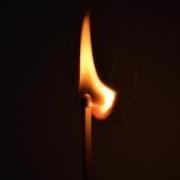All Activity
- Past hour
-
林家興 started following Waltz In A Major and Toccata-Scherzo (2025) for piano
-
Hey everyone, I wrote a short work based on a particular rocking-up-and-down figuration that I liked while improvising. I guess it's a little bit like an étude w/ respect to technique but I also thought the almost perpetuum-mobile right hand gave it a somewhat toccata-esque feel as well. Hope you find it interesting; and if you have any suggestions/critiques/general comments I'd enjoy reading them!
-
A very sprightly waltz that I quite like (and I also think A major/F# minor are pleasant keys to work with, esp. on the piano). I enjoyed the syncopation and a lot of the forward momentum seems to come from the whirring quaver accompaniment or melody. The majority of the waltz seems to hover around the same energy level which slightly put me off (perhaps that's also a consequence of the Noteflight soundfont lol but I'll disregard that), esp. given the work's length and repeats. I would perhaps appreciate more contrast between the different sections i.e. varying dynamics, maybe a slower middle section, or the piece moves into a more distant key; but that's entirely up to the composer and if you have a vision, then it's all yours. I think you broadly did a great job composing for piano as a non-pianist! I don't have many gripes with the technicality or difficulty of the work, perhaps apart from the fact that the constant quaver motion might get a little tiring without a more settled middle section, although that's probably more so for the stamina of the pianist. Some of the five-note chords are certainly comfortable (e.g. 2nd bar, beat 3, right hand; I would take A and B with my thumb, D and E with my index, and the top A with my pinky) but others are a little less so (for the left hand in that same position in the bar, I could either play each note with one finger, which is a little uncomfortable, or try using my pinky and third finger to play two notes each, which are usually the pianist's weaker fingers). Another consideration is when those five-note chords are transposed, the one-finger-plays-two-notes fingering occasionally doesn't work when the two notes are black and white (e.g. bar 65). But, once again, these are only suggestions and a more accomplished pianist could make this work just fine. Thank you for sharing!
- Today
-
PeterthePapercomPoser started following A showdown to the heart (cleaned
-
PeterthePapercomPoser started following therealAJGS
-
therealAJGS started following A showdown to the heart (cleaned
-
the song was a bit messy so I tweaked it a bit.
-
therealAJGS started following PeterthePapercomPoser
-
Nice. Congrats on the album I have subscribed
- Yesterday
-
PeterthePapercomPoser started following A showdown to the heart (Full)
-
therealAJGS started following A showdown to the heart (Full)
-
Full version of the sneak peek, inspired by deltarune, undertale and undertale yellow.
-
PeterthePapercomPoser started following sneak peek of new song
-
therealAJGS started following sneak peek of new song
-
It's been a while because I've been working on other stuff but here's a sneak peek of a new song!
-
Thanks so much for the warm words! There are actually 8 tracks on my album. If you click the little playlist icon near the top right corner, it reveals them all.
-

The wacky adventures of Inspector Looso - Main Theme
Syrel replied to Syrel's topic in Incidental Music and Soundtracks
Thank you Barko, This is the last scene of the movie by the way. The wacky adventures of Inspector Looso - Traffic Agent Looso soundcloud.com/user-461764443/sets/the-wacky-adventures-of Inspector Looso just had a so called lateral promotion. This is the politically correct way used by the Human Resources to bump someone out of his chair. In fact he was demoted down the food chain since he goofed so many times and missed finding the criminals he was supposedly chasing. Luc Looso is now Traffic Agent in Paris at the corner of Rue des Deux Boules and Rue Bertin Poirée where he should be of no harm for anybody but guess what. He gently caressed-up again. The End “This story is a work of fiction. Any similarity to actual persons, living or dead, or actual events, is purely coincidental. The corner of Rue des Deux Boules and Rue Bertin Poirée do exist and you can see it on Google Street. Perfect spot for Looso. Music by: Syrel Musical Notes: You may recognize the inspiration from An American in Paris by George Gershwin, the Candide overture by Leonard Bernstein, a bit of The Pink Panther soundtrack by Henry Mancini as well as many other great composers when they writes funny music such as Tchaikovsky in the Nuts Crackers and Sergey Prokofiev in Peter and the Wolf. -
The emotional warmth from this track is spot on, my friend. It reminds Appollo 13 in so many ways (I forget who wrote the score for that). I love opening horn line that is double by lush strings. Then, we hear pitch percussion. Just so many colors and tones...I could write entire essay on this, but I do not enough space for that. 😄 Kudos!
- Last week
-
4 Minutes and 33 Seconds by John Cage Enhanced Scoring
Churchcantor replied to Syrel's topic in Orchestral and Large Ensemble
BRILLIANT!!! 🤣 -
Hi Marius, Thanks for your message! Your experiment certainly contrasts the different kinds of thirds that are possible! When I say that I was trying to approximate just thirds by bringing down the major third by 1/6th of a tone - I had apparently miscalculated that interval thinking that it would be 16.66 cents flat which would be close to the justly tuned major 3rd at 14 cents flatter than the 12 tet version. I understand now why I actually preferred using syntonic commas before when I first started experimenting with microtones since the syntonic comma is about 21 cents. There is an interval called the "harmonic 7th" which is the 7th that occurs naturally in the harmonic series and sounds especially good in barbershop quartets but doesn't have the strong impetus to resolve like a regular dominant 7th does. It's about 31 cents lower than the 12 tet 7th. But because of that can be more easily approximated with a 1/6 flat sign (which I haven't thought of yet to actually do - I always approximated the harmonic 7th with a 1/4 tone flat). I think you use something close to this 7th in measure 4? Thanks for your clarifying message! Peter
-
Hey Peter, I did a little resolution building with a make-shift notation for the microtonality. I wanted to see if there exists something like a '36-tet dominant chord', something that sounds even more dominant than the normal 12-tet. I didn't find anything at all, but I still think both resolutions sound kinda cool. For the first one I tried resolving with smaller intervals, for the second I used bigger ones. I think you're right about the supermajor chords - I'm not really a fan either. About that E-1/6-flat that was made to sound like a perfect third (just intonated third): I didn't perceive it as such, and I think I know why. A perfect third is a little less than 14 cents lower than 12-tet (according to https://en.wikipedia.org/wiki/Ptolemy's_intense_diatonic_scale), and the third of the dominant only 12. So by lowering that E by 33 cents, you overcompensated, and ended up further away from the perfect third (5 or 9 cents further, but flat instead of sharp). Kind regards, Marius
-
Dear young composers, This is an enhanced score version of the famous and brutally silent masterpiece “4 Minutes and 33 Seconds” by the (should have stayed graphic artist but unfortunately became) music composer John Cage. Should you know the original score you can see that the score has been minimized to only two bars at 1.758 BPM in order to reduce the environment footprint of the score should you want to print it. Moreover, the performance is thus silent since no-one hear the pages turning anymore. Since the audience usually takes an important part in this music, it has its own part in this version. Initially I thought it would have been Wonderfull to set the key to F-Flat all the way but since most audiences are reluctant to read such a difficult key setting I decide instead to have it in C-Flat for the first bar and then create a sparkling modulation at the second bar and go F-Sharp. When you will listen to it if you still can listen to music you will see the difference. To all of you score writing lovers I wish you a Wonderfull reading and listening. In DAW We Trust
- 1 reply
-
- 1
-

-
Hey @Marius_! Thanks for your review! That's okay! Let me try and address all of your suggestions. I think basically what you're suggesting here is to make those leading tones super-major. I think I've done that before - the problem with that is that the interval between the leading tone and it's target tone of resolution is shortened and the resolution becomes less satisfying. What my intent was with the E 1/6th flat is to bring the major third of the chord down to be closer to a justly tuned major 3rd. Thanks again!
-
Hey Peter, This is definitely among the more accessible and coherent-sounding microtonal music I've heard; well done! I probably wouldn't call it poly-microtonal since 12tet is a subset of 36-tet. But then again, is anything poly-microtonal, if you can just define a new tonal system that has all the notes used? I am wondering if it would be possible to create satisfying harmonic movement in this system. I think the major appeal of 12tet music is that you can make really convincing resolutions (like IV-V7-I). Microtonal music / experimental music often lacks those tension releases, in my opinion. Of course if that is your intention, you do you :). For example how would it sound if you changed the E-1/3-flat the 2nd violins keep landing on to a E-1/3-sharp, or even E-2/3-sharp, to emphasize that it's a leading tone? Same goes for b.9-10, 2nd vlns. I would try it myself, but my notation program doesn't really allow microtonal playback and I don't have the patience to manually tune each note in playback lol btw I especially like bar 11-12 with the microtonal echo of the melody, that's really spooky! And the way the 2nd vlns approach that B-1/3-flat on bar 11 is quite sweet. P.S. I'm not really sure but maybe I got 1/3's mixed up with 2/3's - I'm not at all familiar with 36-tet notation
-
Hey music maestros! Just wanted to send a shameless plug for an album I've posted on You Tube. It's a Planet Suite for the modern age. Was going to call it "The Exoplanet Suite"; but that name's already taken apparently! Likes and subscribes would be very much appreciated, as they really help me with the dreaded You Tube algorithm! I think all the tracks have been posted here before; but I've remastered them with vibrant new stereo mixes. Hopefully they work together as a suite? (N.B. The first track has been rewritten according to Peter's advice about staccato strings.) Alex
-
The Mewlips-Tone Poem for String Orchestra
Churchcantor replied to Churchcantor's topic in Orchestral and Large Ensemble
The Shadows where the Mewlips dwell Are dark and wet as ink, And slow and softly rings their bell, As in the slime you sink. You sink into the slime, who dare To knock upon their door, While down the grinning gargoyles stare And noisome waters pour. Beside the rotting river-strand The drooping willows weep, And gloomily the gorcrows stand Croaking in their sleep. Over the Merlock Mountains a long and weary way, In a mouldy valley where the trees are grey, By a dark pool's borders without wind or tide, Moonless and sunless, the Mewlips hide. The cellars where the Mewlips sit Are deep and dank and cold With single sickly candle lit; And there they count their gold. Their walls are wet, their ceilings drip; Their feet upon the floor Go softly with a squish-flap-flip, As they sidle to the door. They peep out slyly; through a crack Their feeling fingers creep, And when they've finished, in a sack Your bones they take to keep. Beyond the Merlock Mountains, a long and lonely road, Through the spider-shadows and the marsh of Tode, And through the wood of hanging trees and gallows-weed, You go to find the Mewlips - and the Mewlips feed. -
The harmony is definitely confusing, it gives the piece a very different, interesting feel. I'm not sure if its supposed to be peaceful, ominous or romantic. Or perhaps all 3? Sure, this could work in a video game, maybe in a somewhat serene, but darker scene. You know what would be fun? If you converted this to normal harmony, so we can get a side by side comparison. My guess is that this would be very romantic.
-
This is a song, Tolkien setting, I wrote in 1993 at the age of 24, and recently arranged as a tone poem for string orchestra. It is so dissonant that the music scares the composer! Eb Minor might be considered a weird key to begin with, but even I have trouble telling what key it is in! Not atonal, post-mahlerian perhaps, but it is about swamp monsters that eat you, so... The Mewlips-Tone Poem for String Orchestra Free Sheet Music by Robert C. Fox for Various Instruments | Noteflight The poem is posted in the Noteflight comments, so you can follow the music with the words, if you can stand to listen to it; again, it scares me!
-
Three Roads Free Sheet Music by Robert C. Fox for Various Instruments | Noteflight I consider it a sort of Tolkien setting, because he liked this Child Ballad, and quoted this fragment of it in an essay.


.thumb.png.f5c7c1a6a554eeeefdce321d089f5901.png)




.thumb.png.8b5b433a341551e913a34392660bc95b.png)


